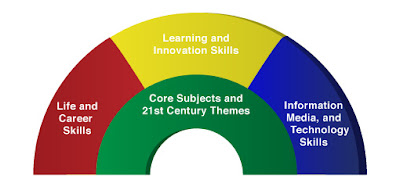The Type of Schools We Need
“Our kids need to have multiple opportunities in rigorous coursework so they can get into good colleges and be competitive in the workforce,” stated an impassioned mother at one of my Superintendent Meet & Greet coffee hours last week. Other parents around the table concurred: we all want the absolute best for our kids, giving them rich academic content and skills so they can succeed in a 21st century global economy.
But is that what is happening across our country? Is it happening in the Mendon-Upton Regional School District?
Critics of the educational status quo often point to the latest results of the PISA (Programme for International Student Assessment) Assessment, an internationally benchmarked test given every three years to 15-year-old students in 65 economically developed nations. The 2009 data show that US students ranked 17th in reading, 30th in mathematics, and 23rd in science. Furthermore, economists and policy analysts predict that upwards of 3 million jobs, particularly those in STEM (science, technology, engineering, and math) fields cannot be filled by employers due to a lack of qualified candidates. In fact, during one of the most recent Republican presidential debates, the candidates sparred over the specifics of opening our borders to the most gifted foreign students to bolster American innovation.
All of this is sad but true. But what does it mean for our schools?
Plain and simple, we need to do things differently.
We need to shift the paradigm of how we educate our kids. In many ways the schools our children attend today are in the same mold as the ones we attended… and the ones our parents attended… and our grandparents… and our great-grandparents. I say this as the structure of schools (grade levels, the length of the school day, curriculum organized by discrete content areas, etc.) has largely remained unchanged since the late 19th century. While these structures served most well for an industrial, manufacturing-based economy, this is no longer the case.
I want to be very clear. I believe that we do a fine job in delivering an essential set of academic skills and content to our children. In the MURSD we do this very well while also tending to the many developmental needs of kids. However, today’s economy demands so much more of our graduates. In additional to the classic skills (the ability to speak and write effectively, problem solve, and critically think), workers must have the ability to create, collaborate, adapt, and oftentimes, innovate. They must have basic new literacies, such as financial literacy and informational literacy, to make sound judgments. The key is that ALL of our kids must have these competencies (commonly referred to as “21st Century Skills”) to succeed today in even the most basic of entry-level jobs.
The good news is that we know what works. There is a plethora of current research and best practices to access to about creating new structures and learning opportunities, particularly through the use of technology, to extend learning beyond the boundaries of the school walls and the school day. These new opportunities speak directly to student acquisition of 21st century skills.
Such a vision is bold, but it is what I am hearing we want for our children as I connect with parents at events such as the coffee hours. In the coming months I look forward with having conversations with all stakeholders about the future of our school district as we will start a comprehensive strategic plan to guide us over the next five years. It is my hope that together we will craft a common vision on how our schools will give all of our students what they need.
May you and your family have a wonderful holiday season. And here’s to a bright 2012!










